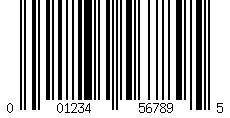Update: see the updated post on using ZInt from within C++.
Summary
I recently took a look at a few open-source barcode generators for Linux. There is an ancient package named "barcode" but it was archaic and didn't seem to do what I needed.
The one I finally decided to use is called Zint, and it works well, but isn't available in Ubuntu's package manager.
This post will show how to build, install it, and call it from a C/C++ application.
Installing Zint
On Ubuntu 18.10, Zint isn't available to install with apt-get. So browse to https://sourceforge.net/projects/zint/ to get the latest source tarball. The one I grabbed is zint-2.6.3_final.tar.gz from early June 2019, available at https://sourceforge.net/projects/zint/files/zint/2.6.3/.
Then run the following:
Depending on what packages you have installed, you may get a warnings about Qt missing. I wasn't looking for the fancy Qt application, I was looking for the .so library, so ignore the warnings.
Running sudo make install will install the following key files:
- /usr/local/lib/libzint.so
- /usr/local/include/zint.h
Using the Zint C API
Using the libzint.so library from a C/C++ application is very simple. Here is a quick application which will create a out.png file with the requested barcode:
This will save the barcode to a file named out.png. The barcode should look like this: 
Note the line with zint->symbology = BARCODE_UPCA. Looking through the Zint documentation (section 5.7, "Specifying a Symbology"), there are more than 140 different barcodes types supported. UPC-A is just a simple common one I was using to test.
To build, you'll need to link again libzint.so. The CMakeLists.txt file I was using with the source file above is the following:
The barcode can be customized further. Refer to the the documentation for details. Here is a slightly more elaborate example:
Note the blueish background specified using typical RGB HTML hex colour codes, the explicit height, and the blank border around the outside of the barcode image. The barcode should look like this: 
Combining Zint and OpenCV
Instead of calling Zbarcode_Print() to have the barcode written out to disk, Zint can also be told to render the barcode in memory as an easy-to-access bitmap. We can then access that bitmap to populate a OpenCV cv::Mat object:
Calling OpenCV's imshow() in the example above should result in a window that looks like this: 
